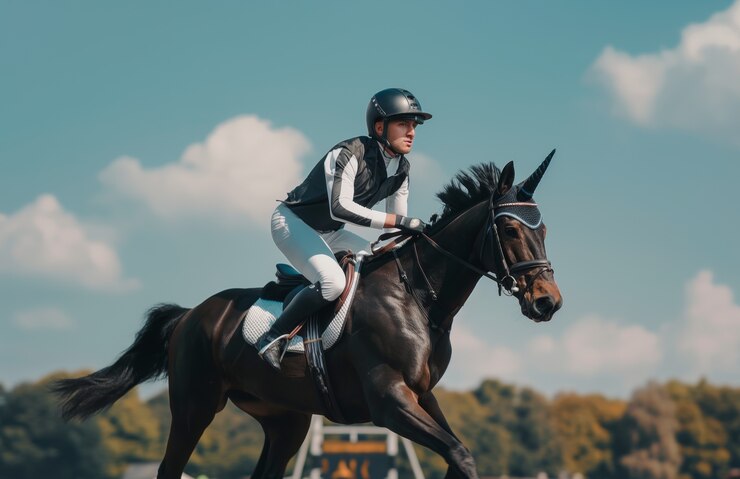Hípica paralímpicos is a unique and exciting category of equestrian sport designed for athletes with physical disabilities. It is one of the most inclusive and visually captivating events in the Paralympic Games. This article will explore the history, rules, and significance of hípica paralímpicos, along with how the sport impacts both athletes and spectators alike.
What Is Hípica Paralímpicos?
Hípica paralímpicos is a form of competitive horse riding for athletes who have a range of disabilities, such as spinal cord injuries, amputations, or cerebral palsy. It has been a part of the Summer Paralympic Games since 1996. The athletes compete in dressage events, demonstrating their skills in controlled movements, precision, and harmony with the horse.
What sets hípica paralímpicos apart from traditional equestrian sports is the classification system. Athletes are classified based on their level of physical impairment, ensuring fair competition. This classification is an essential aspect that allows competitors of different abilities to compete on equal terms.
The History and Evolution of Hípica Paralímpicos
The introduction of hípica paralímpicos into the Paralympic Games marked a significant milestone in the history of adaptive sports. Before becoming an official part of the Games, horse riding had been a popular recreational activity for individuals with disabilities. However, it wasn’t until 1996 that the International Paralympic Committee recognized hípica paralímpicos as a formal competition.
Since then, the sport has evolved significantly. New technologies, training methods, and better understanding of the needs of athletes with disabilities have led to an improvement in the overall quality and competitiveness of the sport.
Key Events in Hípica Paralímpicos
The dressage competition in hípica paralímpicos is divided into different classes, based on the severity of the athlete’s disability. There are three primary levels:
- Grade I: For athletes with the most severe impairments who require significant assistance.
- Grade II and III: For athletes with less severe disabilities who have more independence and mobility.
- Grade IV: For athletes with minimal impairments, often competing with less assistance from their horses.
Each event is scored based on the rider’s ability to control the horse, execute specific movements, and maintain balance. Judges look for fluidity, precision, and overall harmony between the horse and rider. The rider’s position, timing, and technique are all crucial components in determining their score.
The Role of Horses in Hípica Paralímpicos
Horses are an essential part of hípica paralímpicos. These animals are carefully trained to respond to their riders’ commands, regardless of the rider’s physical condition. The bond between the rider and the horse is vital, as it allows for smooth execution of the movements required in dressage.
In hípica paralímpicos, the horse’s temperament is also a key factor in success. Some horses are better suited for athletes with certain disabilities, as they need to be calm, responsive, and sensitive to the rider’s cues.
The Impact of Hípica Paralímpicos on Athletes
Participating in hípica paralímpicos has numerous benefits for athletes. Aside from the physical and psychological rewards of competing, it also provides a platform for athletes to showcase their talents and challenge societal views about disability. Many athletes in hípica paralímpico’s have expressed that the sport gives them a sense of independence, empowerment, and pride.
The training and preparation for hípica paralímpicos are demanding, requiring athletes to develop a range of physical and mental skills. Riders need strength, balance, flexibility, and concentration, as well as the ability to communicate effectively with their horse. These physical and mental demands help athletes develop resilience, determination, and focus.
Why Hípica Paralímpicos Matters for the Global Community
Hípica paralímpicos is more than just a sport; it serves as an important reminder of the power of inclusion and diversity. By allowing individuals with disabilities to compete at the highest levels, it challenges misconceptions about disability and promotes equality. The success of hípica paralímpicos has helped foster greater awareness and acceptance of people with disabilities in society.
Moreover, the athletes in hípica paralímpico’s inspire others to push beyond their perceived limitations, showing that physical disability does not define a person’s potential. The sport has the ability to bring people from diverse backgrounds together to celebrate the achievements of these remarkable athletes.
Conclusion
Hípica paralímpicos represents a remarkable blend of athleticism, skill, and empowerment. It not only provides athletes with disabilities a chance to showcase their abilities but also inspires people worldwide by breaking down barriers. The sport continues to evolve and inspire future generations of riders, proving that the human spirit can overcome any challenge.
Frequently Asked Questions About Hípica Paralímpicos
1. What disabilities qualify for hípica paralímpicos?
Athletes with a variety of physical disabilities can participate in hípica paralímpicos, including but not limited to, cerebral palsy, spinal cord injuries, amputations, and visual impairments. The classification system ensures that all athletes, regardless of their specific disability, can compete fairly.
2. How is a rider’s classification determined?
Riders are assessed by medical professionals and classified based on the severity of their disability. This classification is crucial for ensuring that competitors face similar challenges and have an equal chance of success in the competition.
3. Is hípica paralímpicos only a Paralympic event?
No, while hípica paralímpicos is a prominent event in the Paralympic Games, the sport is also practiced at a national and international level. There are numerous competitions held worldwide, where athletes with disabilities can compete and gain valuable experience.
4. Can anyone participate in hípica paralímpicos?
To participate in hípica paralímpicos, athletes need to meet specific eligibility criteria and classification standards. Additionally, they must be trained and skilled in dressage and riding. While anyone with the necessary abilities can compete, reaching the level required for the Paralympic Games is highly competitive.
5. How can people get involved in hípica paralímpicos?
There are various organizations and equestrian clubs that provide training for people with disabilities. If someone is interested in pursuing hípica paralímpicos, they can start by looking for local adaptive riding programs or contacting national equestrian federations to get more information on how to get started.
